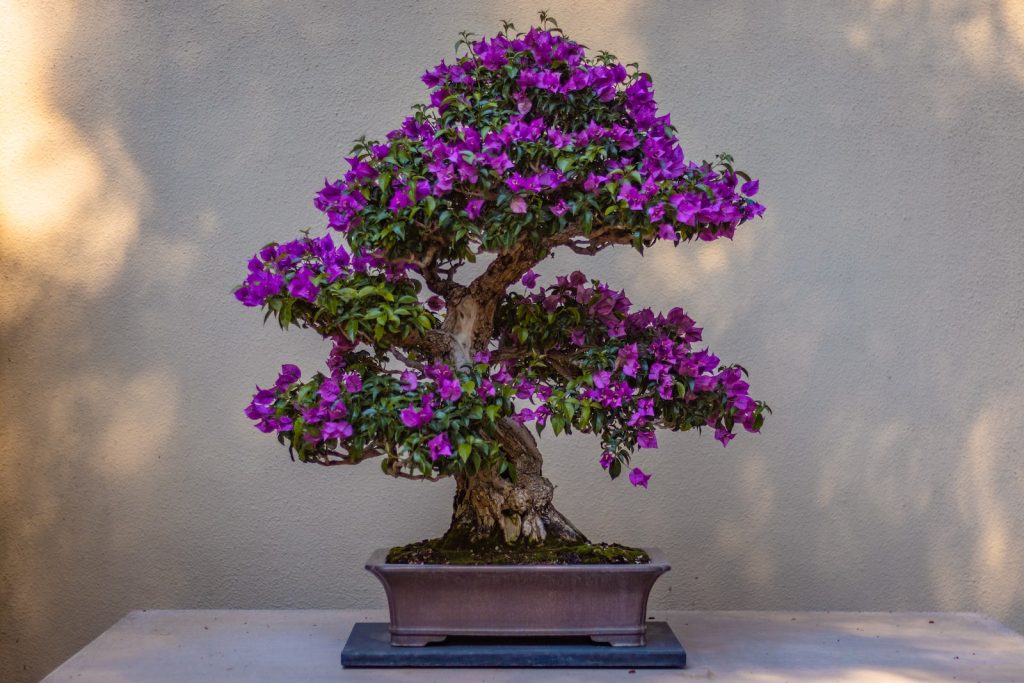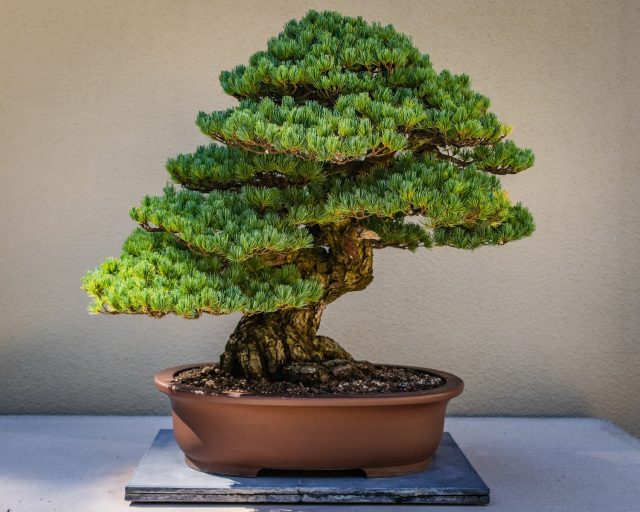What is Bonsai?
Bonsai, the ancient art of growing miniature trees, has been practiced for centuries and is revered for its ability to bring a sense of peace and harmony to those who practice it. The art of bonsai originated in China over a thousand years ago and was later perfected by the Japanese. In recent years, bonsai has gained popularity worldwide as a way to reconnect with nature and find inner peace.
The practice of bonsai involves carefully cultivating and shaping small trees to mimic the appearance of full-grown trees found in nature. By pruning and shaping the tree, the bonsai artist creates a miniature representation of nature that reflects the beauty and simplicity of the natural world. The process requires patience, attention to detail, and a deep understanding of the tree’s growth patterns and needs.
Bonsai has become a popular hobby for many people looking to escape the stresses of modern life and find peace in nature. The practice offers a meditative and relaxing way to connect with the natural world and foster a sense of inner calm. In this blog, we will explore the history of bonsai, the techniques involved in cultivating these beautiful trees, and the benefits of practicing bonsai for inner peace. Whether you are a seasoned bonsai enthusiast or a curious beginner, this blog will provide valuable insights into the ancient art of bonsai and its ability to bring peace and tranquility to our lives.
History: Origins of Bonsai
The origins of bonsai can be traced back to China over a thousand years ago. It was originally known as “pun-sai,” which means “tray planting.” The practice involved growing and training small trees in containers, creating miniature landscapes that were often displayed indoors.
In the 6th century, Chinese monks brought the art of pun-sai to Japan. The Japanese adapted the practice, and it became known as bonsai, which means “tray planting” in Japanese. Over time, bonsai became more refined and developed into Japan’s highly respected art form.
During the Edo period in Japan (1603-1868), bonsai became popular among the aristocracy and samurai. It was during this time that many of the techniques still used today, such as pruning and wiring, were developed and perfected.
Bonsai was first introduced to the Western world in the late 1800s when Japan opened its borders to foreign trade. It quickly gained popularity among horticulturists and collectors, and today, bonsai is practiced all over the world.
In addition to Japan and China, other countries such as Korea, Vietnam, and Indonesia have their own unique styles of bonsai. The local environment, culture, and traditions influence each style.
The history of bonsai is a rich and fascinating one, with many centuries of tradition and techniques passed down through generations. Today, bonsai is a beloved hobby and art form, appreciated for its beauty, tranquility, and connection to nature.
Health Benefits: Stress Relief
One of the many benefits of practicing bonsai is its ability to reduce stress and promote relaxation. Bonsai requires great focus and concentration, which can help clear the mind of racing thoughts and worries. As a result, practicing bonsai can help reduce anxiety and promote a sense of calm and tranquility.
Studies have shown that spending time with plants, including bonsai, can significantly impact mental health. For example, a study conducted by the University of Hyogo in Japan found that viewing bonsai trees can reduce physiological stress indicators, such as blood pressure and heart rate. Another study conducted by the University of Exeter in the UK found that being around plants, including bonsai, can improve mood and reduce feelings of stress and anxiety.
In addition to promoting relaxation, bonsai can also have a meditative quality. Caring for and pruning a bonsai tree requires great patience and attention to detail. This can help cultivate mindfulness, a state of focused awareness of the present moment. Practicing mindfulness has been shown to reduce stress, anxiety, and depression.
Finally, the act of connecting with nature through bonsai can have a profound impact on overall well-being. Spending time in nature has been shown to improve mood, boost energy levels, and reduce stress. By bringing a miniature version of nature indoors through bonsai, individuals can experience the benefits of nature, even in urban or indoor environments.
In summary, practicing bonsai can promote relaxation, reduce stress, cultivate mindfulness, and connect to nature, all of which can positively impact overall health and well-being.
Techniques: How to Grow Bonsai
Growing a bonsai tree requires a great deal of patience, attention to detail, and knowledge of various techniques. While there are many different bonsai styles, the basic techniques for growing a bonsai tree are the same. Here are some fundamental techniques for growing bonsai
- Selecting the Right Tree: The first step in growing a bonsai tree is selecting the right tree species. Common species used for bonsai include juniper, pine, maple, and elm. When selecting a tree, consider the climate in your area and the size and shape of the tree.
Maintenance and care
- Pruning: Pruning is an essential technique for shaping and maintaining the size of your bonsai tree. Use sharp, clean pruning shears to remove any unwanted growth, such as branches or leaves blocking light or detracting from the tree’s overall shape.
- Wiring: Wiring is another technique used to shape and train the branches of a bonsai tree. Soft aluminum or copper wire is wrapped around the branches, allowing you to bend and shape them into the desired position.
- Repotting: Repotting your bonsai tree is necessary every few years to ensure that it has enough room to grow and receive the essential nutrients. When repotting, carefully remove the tree from its pot, trim the roots, and place it in a new pot with fresh soil.
- Watering: Proper watering is essential for the health and growth of your bonsai tree. Overwatering or underwatering can cause damage or even kill the tree. Water the tree when the soil is dry to the touch, and be sure not to let the tree sit in standing water.
- Fertilizing: Bonsai trees require regular fertilization to ensure healthy growth. Use a balanced fertilizer that contains nitrogen, phosphorus, and potassium, and apply it according to the instructions on the package.
In addition to these techniques, there are many other factors to consider when growing a bonsai tree, such as light, temperature, and humidity. By mastering these basic techniques and learning more about your tree’s specific needs, you can create a beautiful and healthy bonsai tree that brings joy and tranquility to your life.
Design Principles: Aesthetics of Bonsai

Bonsai is not just a hobby or a skill but also an art form. The aesthetic principles of bonsai focus on creating a beautiful and harmonious tree. The design principles of bonsai involve the careful balance of several elements, including:
- Size and Proportion: One of bonsai’s most important design principles is creating a proportionate and balanced tree. The trunk, branches, and foliage should all be in proportion to each other and create a harmonious overall appearance. A bonsai tree should be visually pleasing and not look too heavy or too sparse.
- Balance and Harmony: Bonsai trees should have a sense of balance and harmony. This means the tree should look visually balanced and not appear lopsided or tilted. A sense of harmony is created when the various parts of the tree, such as the foliage, branches, and trunk, all work together cohesively and pleasingly.
- Movement and Flow: Movement and flow are important aspects of bonsai design. The trunk and branches should have a sense of movement and not appear rigid or static. The tree’s overall shape should also have a sense of flow, with the branches and foliage arranged to create a sense of movement and naturalness.
- Proximity and Distance: The distance between the various parts of the bonsai tree, such as the foliage and branches, is also an important design principle. The proximity and distance should be carefully considered to create a sense of depth and perspective.
- Color and Texture: The color and texture of the foliage, bark, and branches are important design elements that can create a sense of depth and dimensionality.
By carefully considering these design principles, bonsai enthusiasts can create a beautiful and harmonious miniature tree that is aesthetically pleasing and promotes peace and tranquility.
Conclusion: Inner Peace & Harmony
Bonsai is more than just a gardening hobby. It is an ancient art form that has been practiced for centuries. Growing and caring for a bonsai tree can be a rewarding and meditative experience that promotes inner peace and harmony.
Through pruning, wiring, and repotting techniques, a bonsai tree can be shaped and trained to create a beautiful and harmonious miniature tree that embodies the principles of balance, proportion, and movement. This artistic expression can be a source of relaxation and tranquility, as the process of caring for a bonsai tree requires patience, focus, and attention to detail.
In addition to its aesthetic benefits, bonsai also offers numerous health benefits. Studies have shown that gardening and spending time in nature can reduce stress and anxiety, lower blood pressure, and improve overall mental and physical health.
By cultivating a bonsai tree, you can tap into the therapeutic benefits of nature and art while creating a beautiful and meaningful object that brings you joy and inner peace. So why not try your hand at bonsai and see what the ancient art form can do for your well-being and harmony?






























